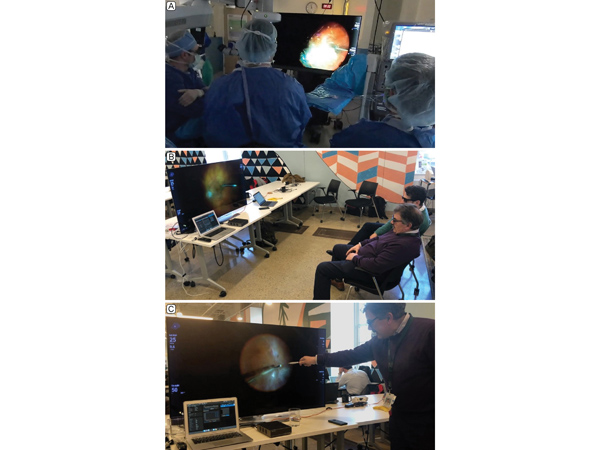Three-dimensional telesurgery and remote proctoring over a 5G network
Main Article Content
Abstract
Purpose
To present 2 cases of vitreoretinal surgery performed on a three-dimensional (3D) heads-up display surgical platform with real-time transfer of 3D video over a fifth-generation (5G) cellular network.
Methods
An epiretinal membrane peel and tractional retinal detachment repair performed at Massachusetts Eye and Ear in April 2019 were broadcast live to the Verizon 5G Lab in Cambridge, MA.
Results
Both surgeries were successful. The heads-up digital surgery platform, combined with a 5G network, allowed telesurgical transfer of high-quality 3D vitreoretinal surgery with minimal degradation. Average end-to-end latency was 250 ms, and average round-trip latency was 16 ms. Fine surgical details were observed remotely by a proctoring surgeon and trainee, with real-time communication via mobile phone.
Conclusions
This pilot study represents the first successful demonstration of vitreoretinal surgery transmitted over a 5G network. Telesurgery has the potential to enhance surgical education, provide intraoperative consultation and guidance from expert proctors, and improve patient outcomes, especially in remote and low-resource areas.
Downloads
Article Details

This work is licensed under a Creative Commons Attribution-NonCommercial-NoDerivatives 4.0 International License.




